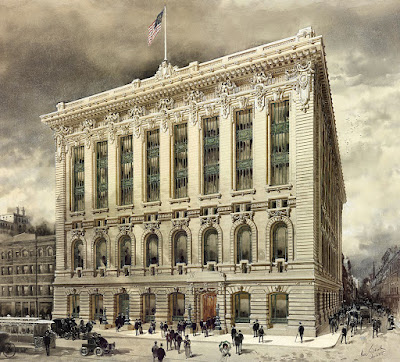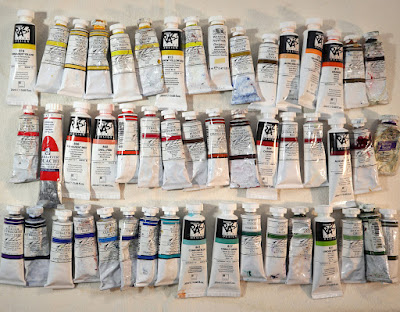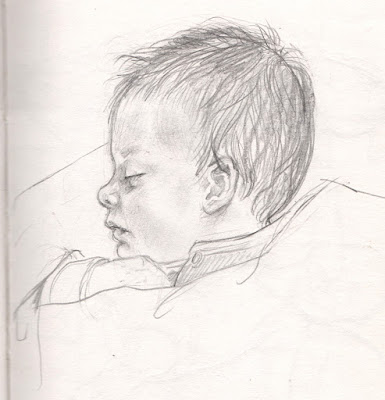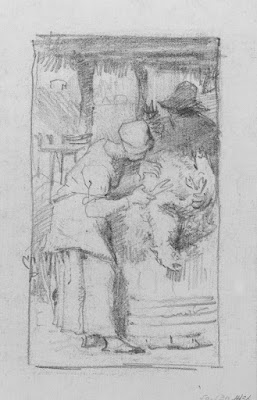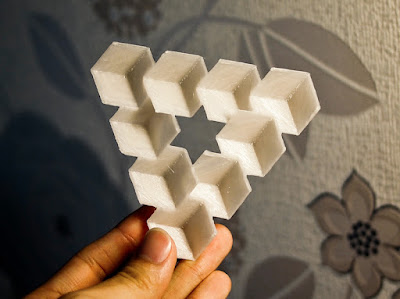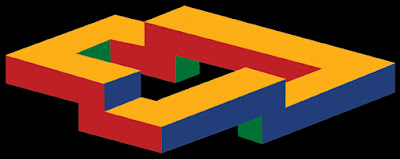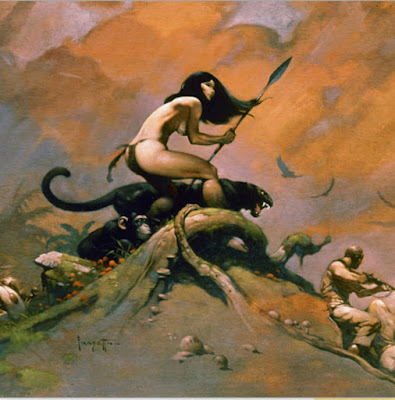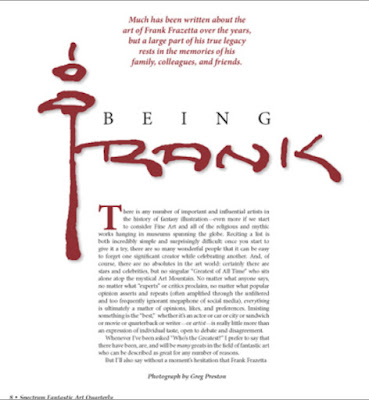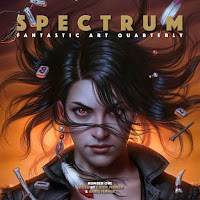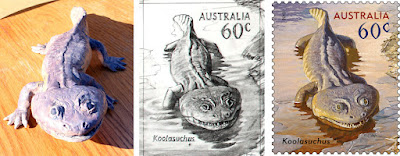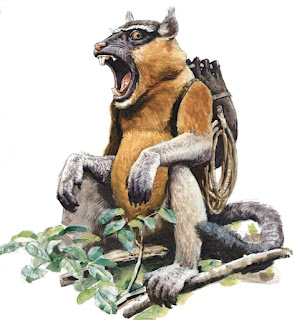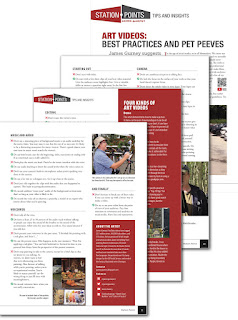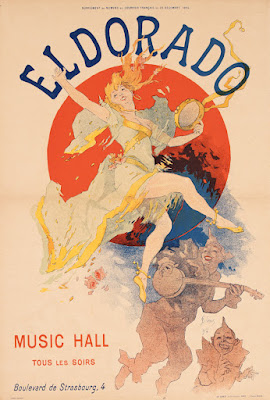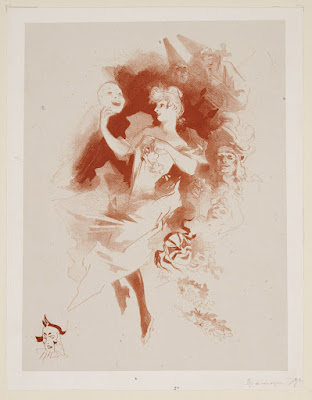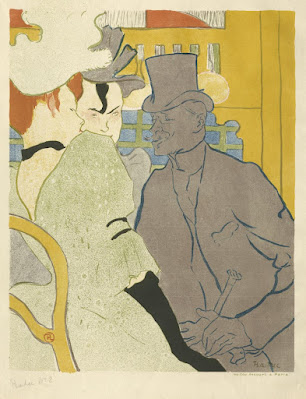It's rare to see step-by-step sequences for illustrations done over a century ago.
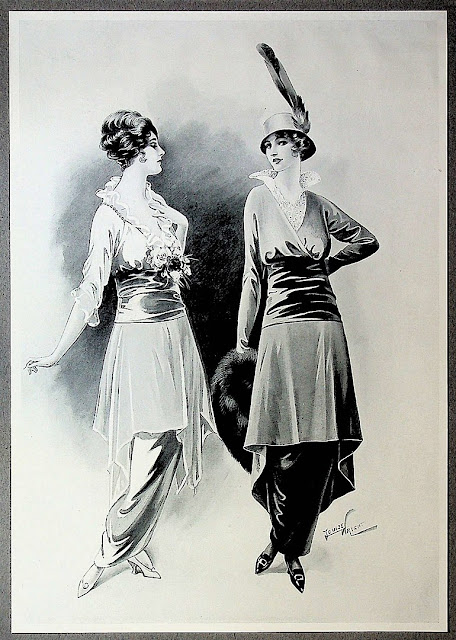
British illustrator Louise Wright (born 1863) creates a fashion plate with two female figures, and the process was captured by Percy Bradshaw in a book called The Art of the Illustrator.
Stage 1: "The figures are lightly touched in with pencil on Roberson’s Fashion Board, B surface (extra
smooth), the board measuring 14 inches wide by 21 inches high. The design of the costumes is original, and
was suggested by certain characteristic details which were
in fashion at the time when Miss Wright commenced the
drawing."
Stage 2: "Brush work is commenced, Lamp Black and Sables of various sizes from No. 0 to
No. 5 being used. Faint washes of tone are introduced
into the face seen in profile, for instance around the eyes,
nose and chin, while in the other face light washes can be
seen across the forehead, down the nose, mouth and shadow
side of the face, beneath the chin, and on the neck of the
front view."
Stage 3: "The modeling of the faces is carried considerably further, by stippling up the light tones previously introduced. Dead white is still left over the major
portion of the heads, but the strengthening of tone which
would be noted in the reproduction is accomplished by a
delicate cross-hatching with the point of the brush used
comparatively dry. This cross-hatching needs very dexterous
manipulation, and wherever it is possible to obtain the
effect by fresh washes it is preferable."
Stage 4: "The artist has been chiefly concerned here with the strengthening of tone all over the outdoor costume, while the Evening dress is taken a stage further by the introduction of some fresh, simple washes. It was noticed, in working upon the outdoor costume, that the drawing of the left hip created a somewhat ugly line, and the outline has consequently been reduced or flattened here by the introduction of a little Chinese White. A flat light wash has been taken all over the cloth portion of the dress, the folds at the left arm and the outline of the bust have been more definitely shaded, and the sash in the centre very considerably increased in color."
Stage 5: "The drapery of the sleeve has also been emphasized by outlining each of the shadows with this
opaque white, a wash has been carried over the edge of the
sleeve to form a frill, and further broad touches of white
added to give transparency to the material. A bunch
of flowers has been broadly indicated, chiefly with a wash
of tone, the petals of the white rose being indicated with
the opaque white, the dark flower with a wash of half tone,
the shadows being filled in with black. The high lights
on the waist-band have also been emphasized with the
Blanc d’Argent and the outline of the band defined in the
same way."
Stage 6: "The hair has been slightly strengthened in color, the outline of the face altered by introducing a slightly fuller
chin, and rather more prominence and fullness in the lips,
which formerly suggested a rather simpering mouth. These
alterations have been made with Chinese White. The eye
and eyebrow have been introduced more heavily, the lips
strengthened in color, the line at the back of the neck
more definitely drawn."




